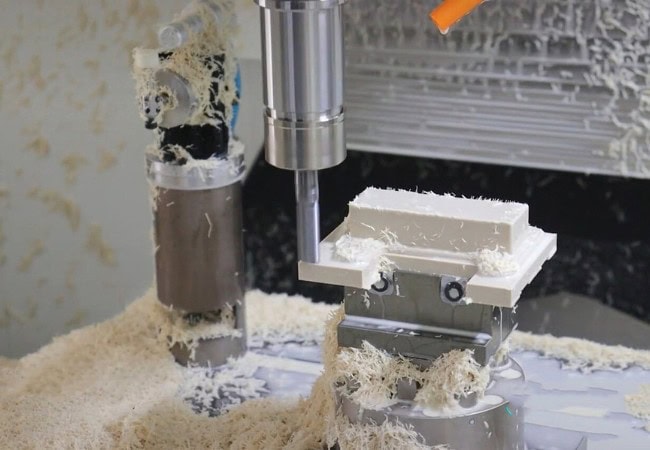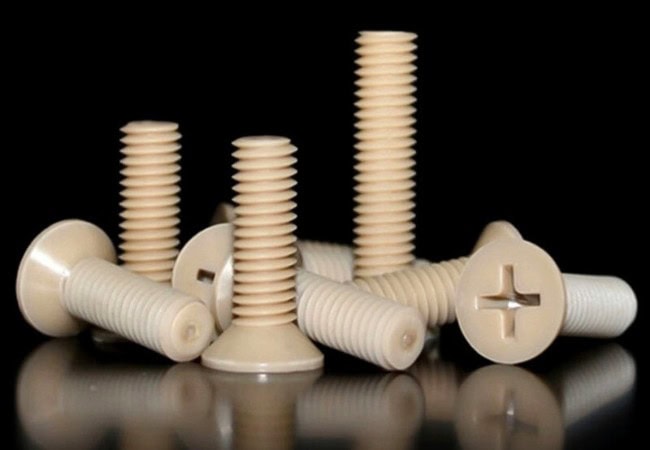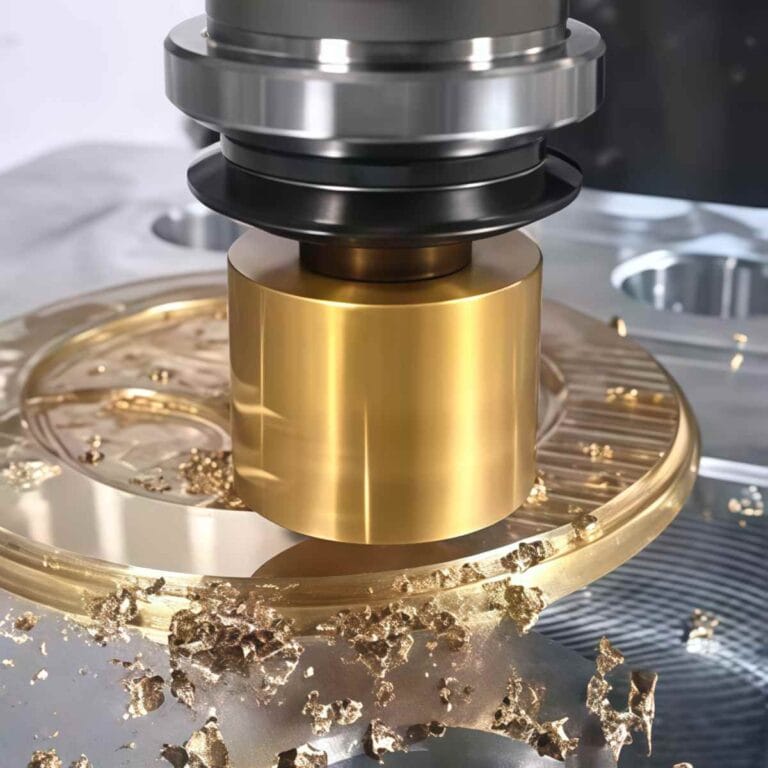
PEEK plastic is one of the finest high performance plastics on the market due to its unique combination of excellent properties, maintaining superior strength and dimensional stability under load and in the harshest environments. Due to its high cost, it is critical to select an experienced company for PEEK processing to avoid waste and meet your specifications.
This guide will detail the processing of PEEK, the steps involved and its wide range of applications across a variety of industries to help you better understand and apply this high performance material.
What is PEEK
PEEK (Polyaryletheretherketone) stands out as a tough, beige-colored engineering thermoplastic noted for its high endurance under extreme conditions, including substantial chemical and wear resistance and excellent stability of shape. This premium polymer is composed of repeated units of two ether groups and one ketone group.
Common equipment and tools for processing
1.CNC machines: These include CNC lathes and CNC milling machines for precise machining of the shape and structure of PEEK parts.
2.Cutting tools: such as drills, milling cutters, etc., are used to cut and process PEEK.
3.Clamps and fixtures: used to clamp and position PEEK workpieces to ensure machining accuracy and stability.
4.Measuring and inspection equipment: e.g. micrometers, projectors, etc. are used to check the dimensions and quality of machined PEEK parts.
5.Surface treatment equipment: such as grinding machine, polishing machine, etc., used for surface treatment of processed PEEK parts to improve the surface quality.
PEEK Processing Methods
1.CNC Turning
Principle: According to the processing of different grades of PEEK material to select the processing tool, cutting processing.
Application: Finishing of PEEK materials to meet specific size and shape requirements.
2.CNC Milling and Drilling
Principle: The PEEK material is cut by milling cutters and drills using CNC machines.
Application: Suitable for machining flat surfaces and holes in PEEK materials.
3.Extrusion Molding
Principle: After heating and melting the PEEK polyether ether ketone material, the molten material is extruded through an extruder to form various shapes.
Application: Mainly used for the production of plates, bars, tubes, etc. It is suitable for mass production of large and complex parts of the same shape.
4.Press Molding
Principle: PEEK polyether ether ketone powder or granular material into the mold, through high temperature and high pressure to make it hot melt and press molding.
Application: Suitable for manufacturing complex shaped parts or small batch production.
5.Spray Molding
Principle: PEEK particles are heated and melted, and sprayed onto the substrate by spraying equipment to form a coating.
Applications: Manufacture of complex shaped parts or thin-walled structures, surface coatings, films, and other products.
PEEK Processing Steps

1.Reconciliation of Drawings
Check the 3D file against the CAD drawing file dimension by dimension. Ensure that all dimensions match exactly. Correct any non-conformities with the client in a timely manner.
2.Preparation of Materials
Develop appropriate material specifications based on the dimensions of the part. Test incoming materials to ensure that the material meets the part’s fabrication.
3.Selection of Suitable Fixtures
According to the shape and size of the workpiece, select the appropriate fixture to ensure that the workpiece is stable and immobile during machining.
4.Selection of Tools and Toolpaths
Select the appropriate tool according to the machining process, such as high hardness carbide tools or polycrystalline diamond (PCD) tools.
5.Setting Processing Parameters
According to the characteristics of PEEK, set the appropriate cutting speed to avoid material burns or deformation due to excessive cutting speed. Set reasonable feed speed to ensure stable machining process and avoid rough surface of workpiece or tool breakage.
6.Machined Workpieces
Prepare CNC machining program and input the designed tool path and machining parameters into the CNC machine. Drilling, milling and turning operations of PEEK are carried out on the CNC machine to perform precision machining according to the programmed paths and parameters.
7.Inspection and Adjustment
Regularly check the quality of machined parts and measure dimensions and tolerances to ensure compliance with design requirements. According to the inspection results, adjust the machining parameters appropriately and optimize the machining process to ensure the accuracy and quality of the parts.
8.Surface Finishing Treatments
Use specialized tools to deburr the surface of the workpiece to improve the surface finish and aesthetics of the part.
9.Cleaning and Packaging
Use detergents or ultrasonic cleaning equipment to remove dirt and residue from the surface of the parts. Package the cleaned parts, wrapping them in protective material to avoid damage during transportation and storage.
Industrial Applications of PEEK
- Aerospace: PEEK is commonly used in structural parts and components in the aerospace field, such as aero-engine components, spacecraft components, etc., due to its high strength and high temperature resistance.
- Medical Devices: PEEK is widely used in the medical field, such as the manufacture of surgical instruments, medical implants, etc., due to its biocompatibility and wear resistance.
- Chemical equipment: PEEK is used in the chemical industry as a material for corrosion-resistant parts, such as pipes and valves, due to its excellent chemical stability and corrosion resistance.
- Automotive manufacturing: In automotive manufacturing, PEEK is commonly used in the manufacture of automotive parts, such as seals, bearings, etc., due to its high strength and wear resistance.
How to Improve the Quality of PEEK Processing

To further improve the processing quality of PEEK, consider the following detailed tips:
1.Selection of appropriate cutting tools and tool coatings: Select carbide tools specifically designed for PEEK machining and consider coatings to improve tool life and machining quality.
2.Optimization of cutting parameters: According to the characteristics of PEEK and processing requirements, cutting speed, feed rate, depth of cut and cutting angle are reasonably set to ensure the best processing effect.
3.Avoid vibration and resonance: Optimize clamping and tool paths during machining to reduce vibration and resonance phenomena and ensure machining stability and surface quality.
4.Reasonable tool path design: The use of reasonable tool paths and cutting strategies, such as helical interpolator paths and multi-stage cutting, can reduce cutting forces and improve machining accuracy.
5.Precise Clamping and Positioning: The use of precise clamping and positioning fixtures ensures workpiece stability and machining accuracy, avoiding deformation and errors caused by improper clamping.
6.Strict implementation of process inspection: The size of each process is tested during the production process to avoid unqualified dimensions leading to material scrapping.
FAQs
1.What is the cost of PEEK processing?
The processing cost of PEEK is relatively high, and the material cost is the highest percentage. parts made of PEEK are a great test for technical engineers.
2.What are the machinability properties of PEEK?
- Cutting performance: PEEK is relatively easy to cut, but because of its good thermal stability, it requires the use of high-speed cutting tools and lower cutting speed.
- Thermal stability: PEEK has good thermal stability, can be maintained at higher temperatures to stabilize the performance, so in the process need to consider the appropriate cooling method.
- Grinding performance: PEEK has better grinding performance and can be ground to obtain higher precision and smoother surface.
3.How to avoid tool wear in machining?
- Use high-quality cutting tools: Selecting high-quality carbide cutting tools specifically designed for machining PEEK can effectively reduce wear.
- Control of cutting parameters: reasonable control of cutting speed, feed rate and depth of cut, to avoid excessive cutting and high cutting temperature, help reduce tool wear.
Conclusion
PEEK is a high-performance engineering plastic with high-temperature resistance, high strength and wear resistance. When machining, sharp tools and appropriate cutting parameters should be selected. For special grades of PEEK, such as glass fiber and carbon fiber reinforced PEEK, polycrystalline carbide (PCD) tools are recommended. Appropriate coolant is used during machining to prevent deformation and cracking.



















